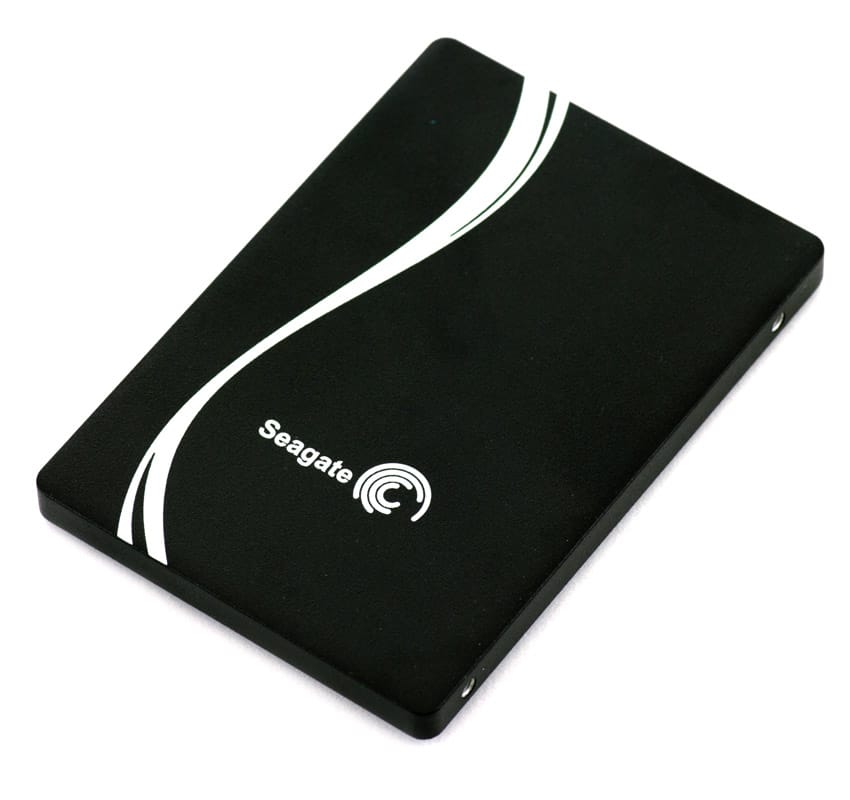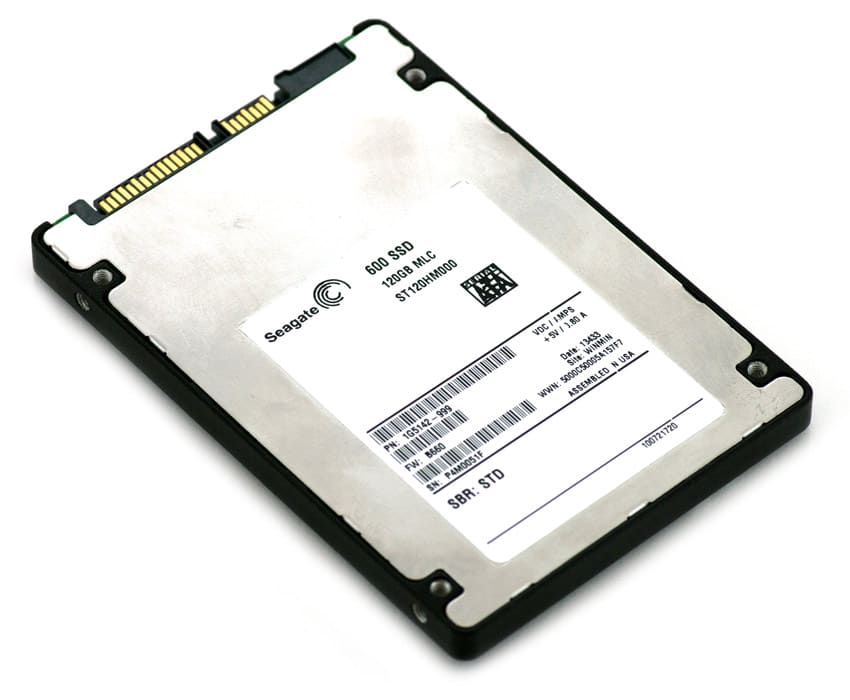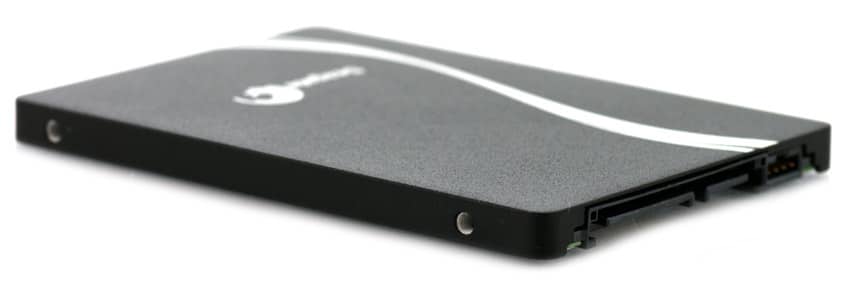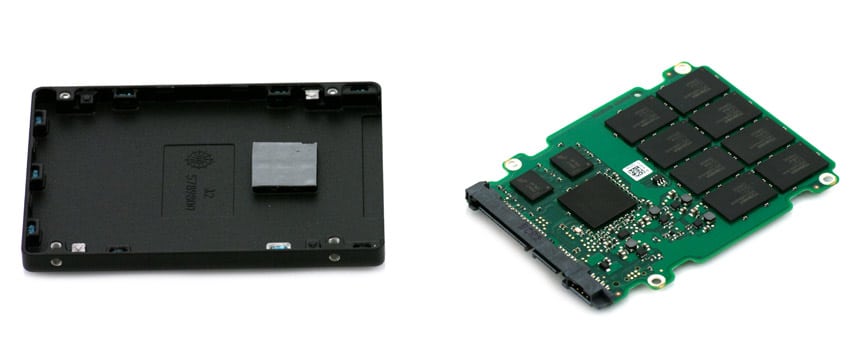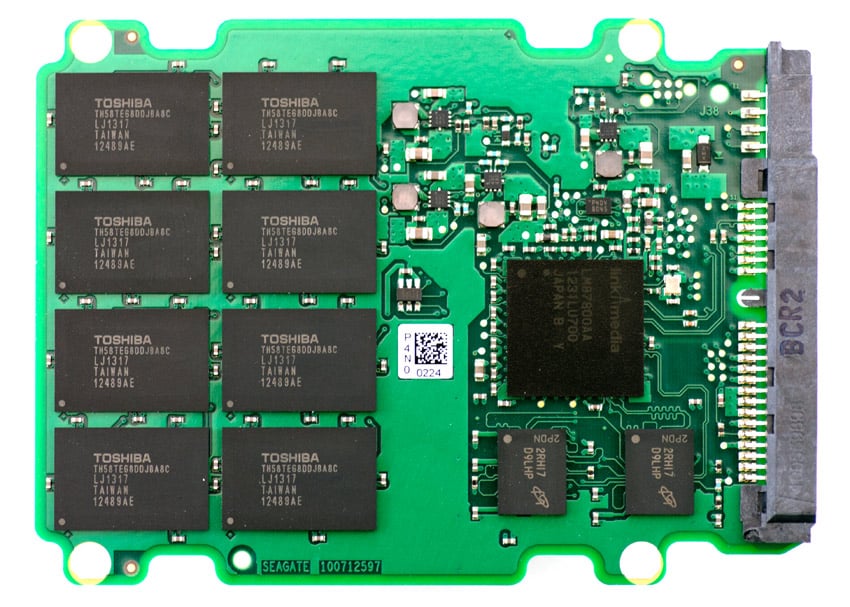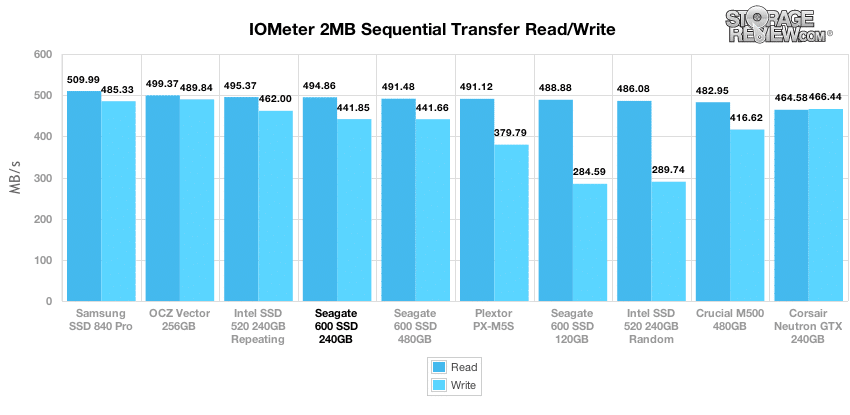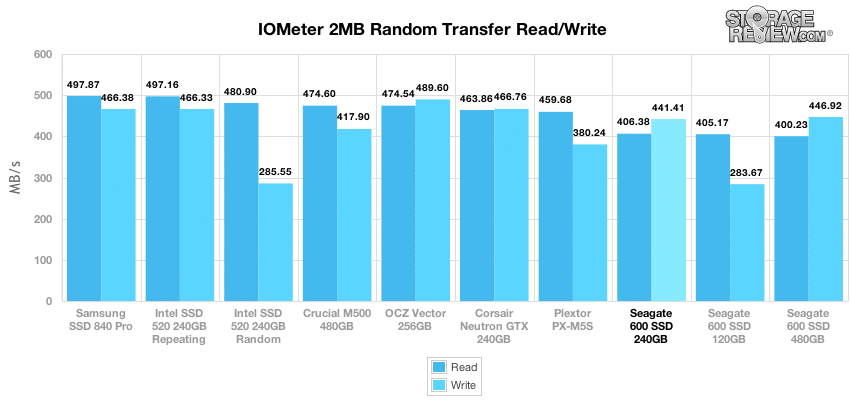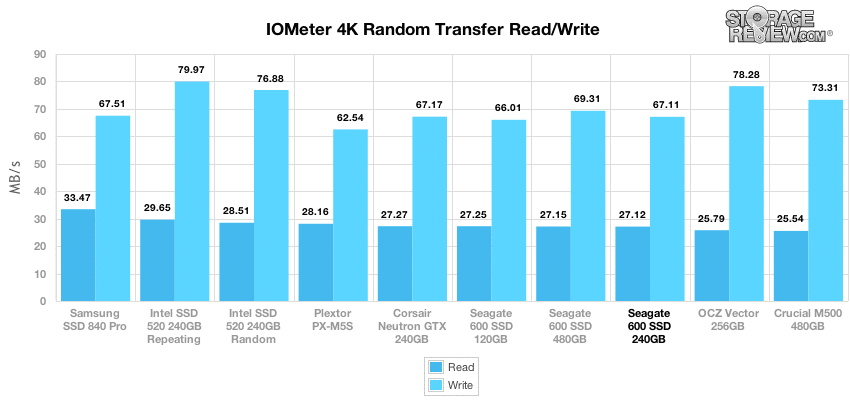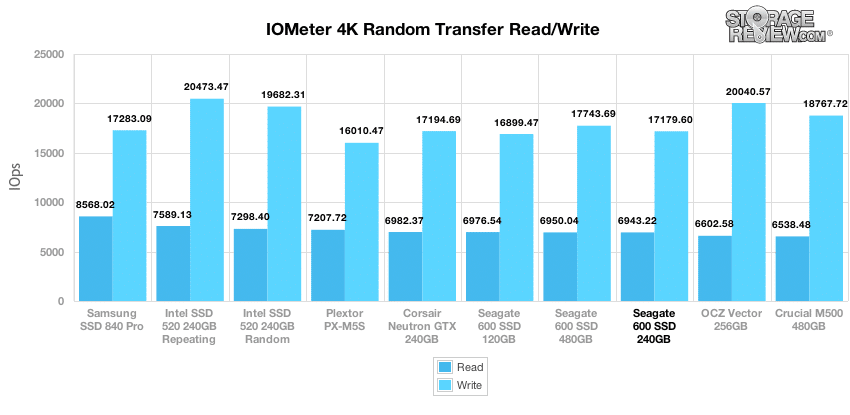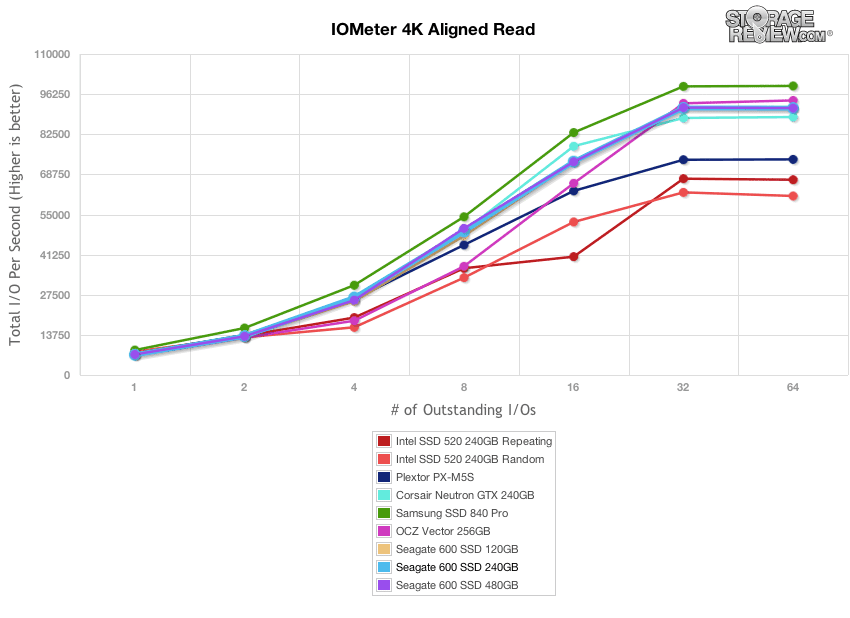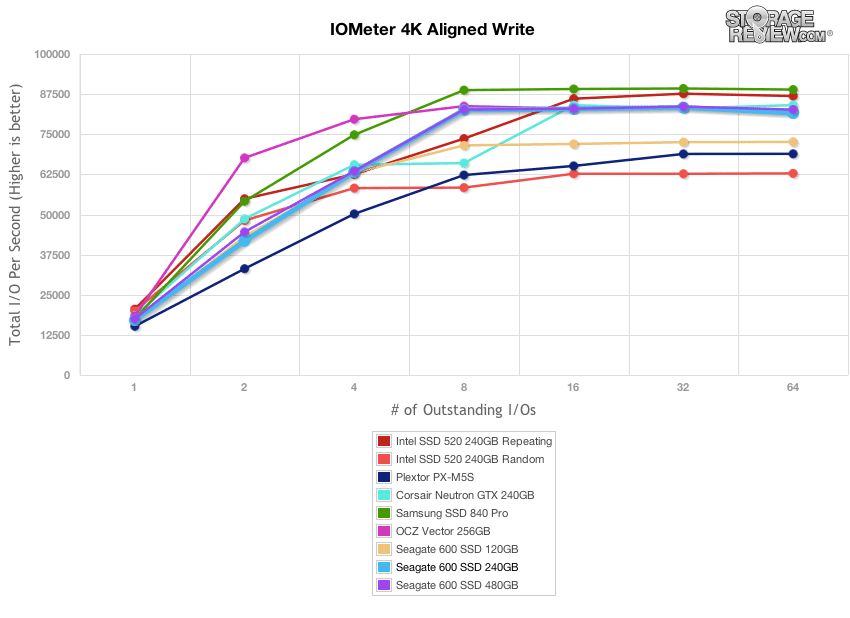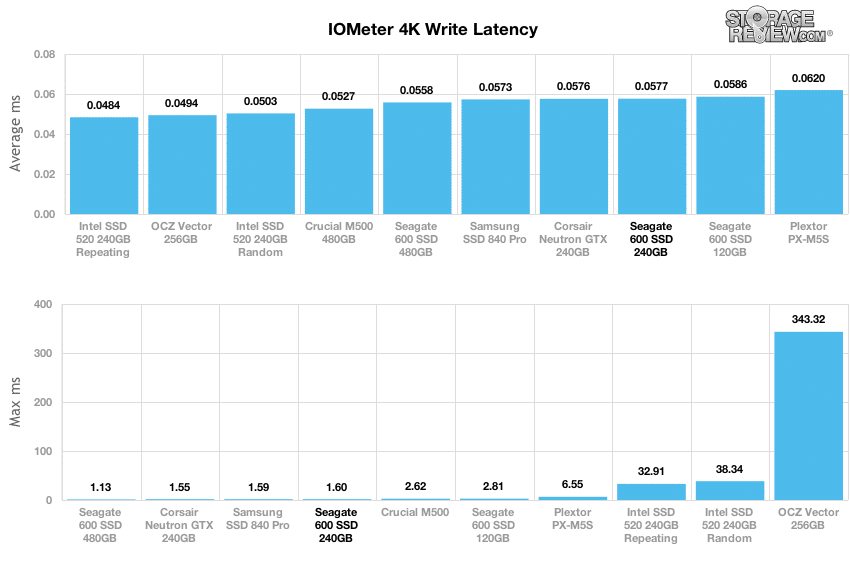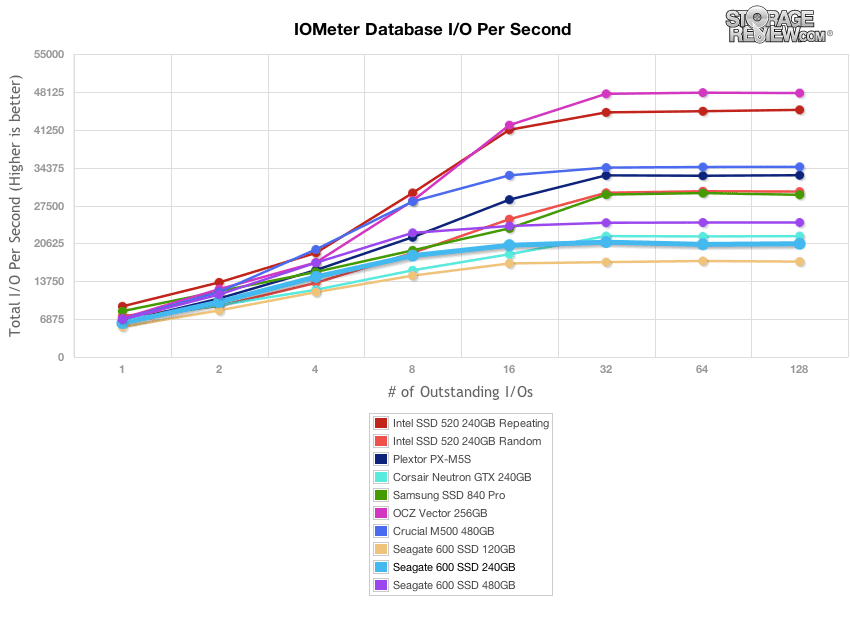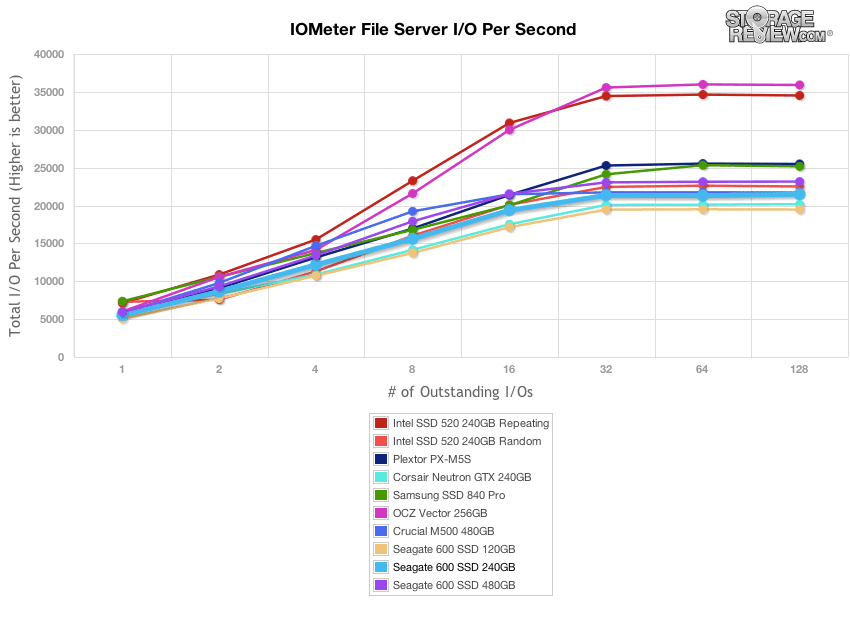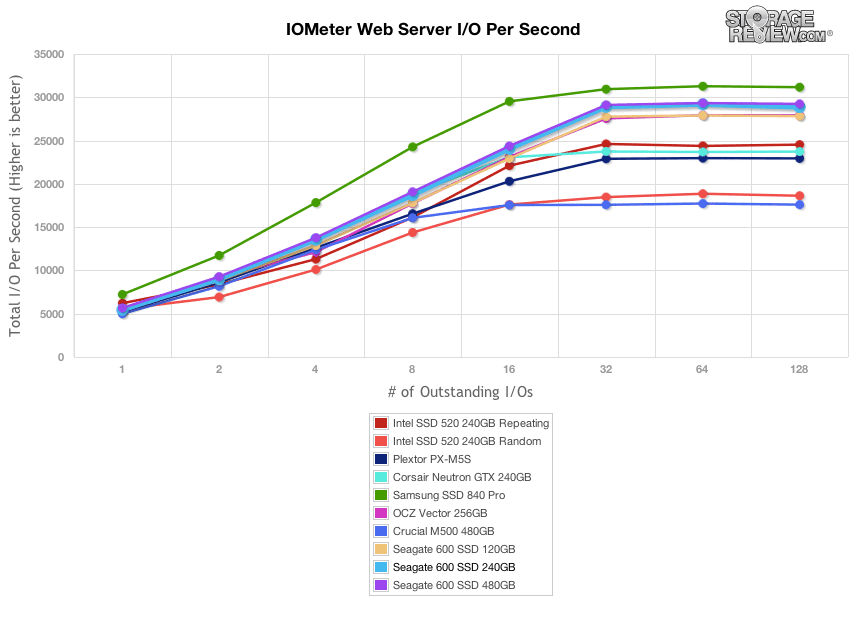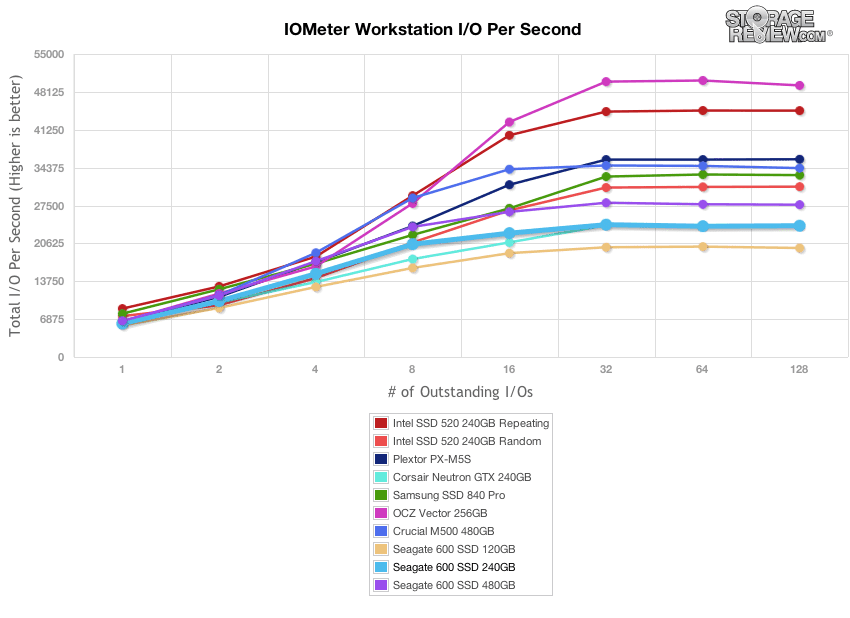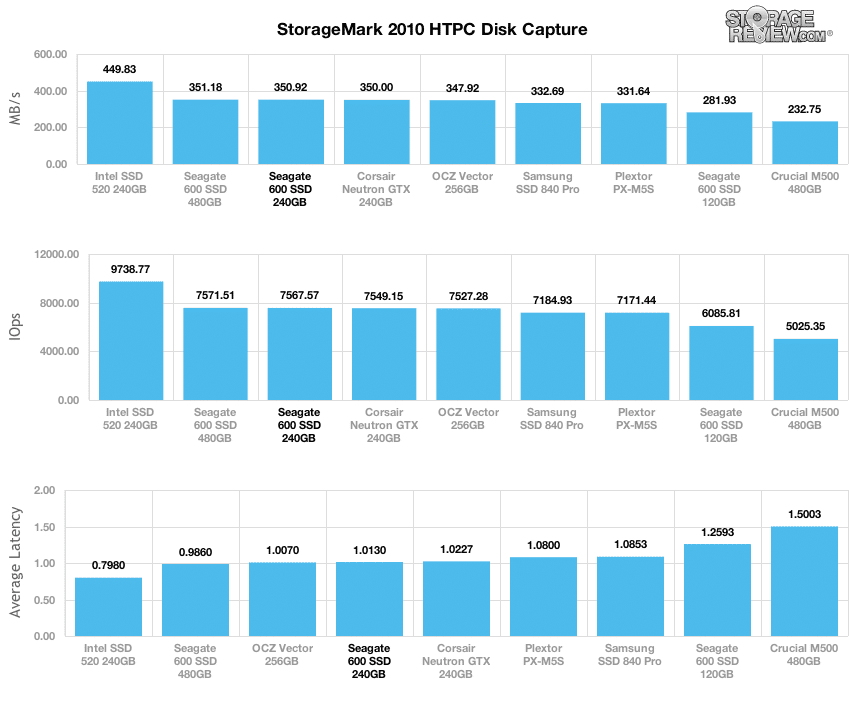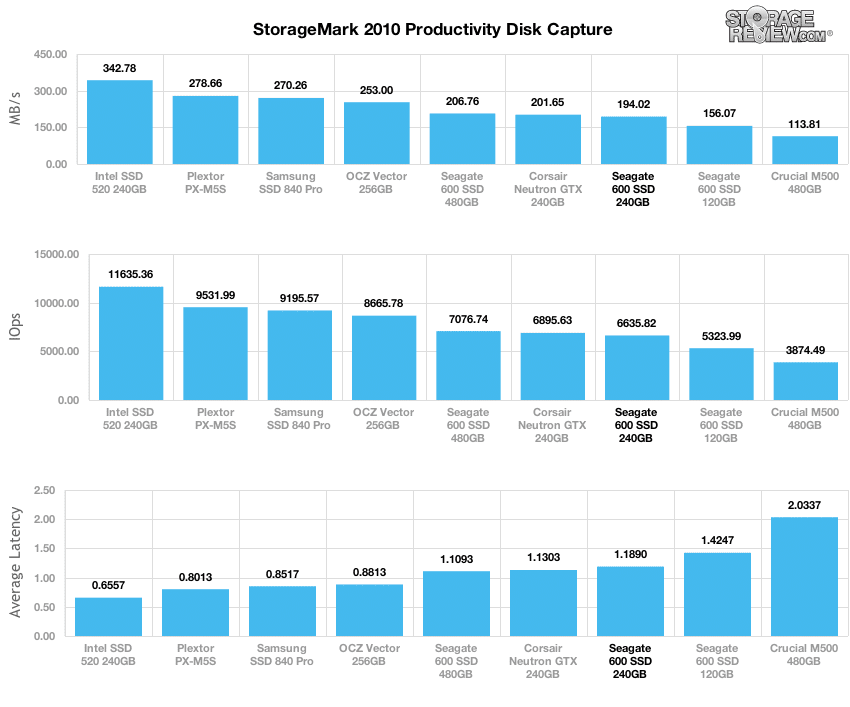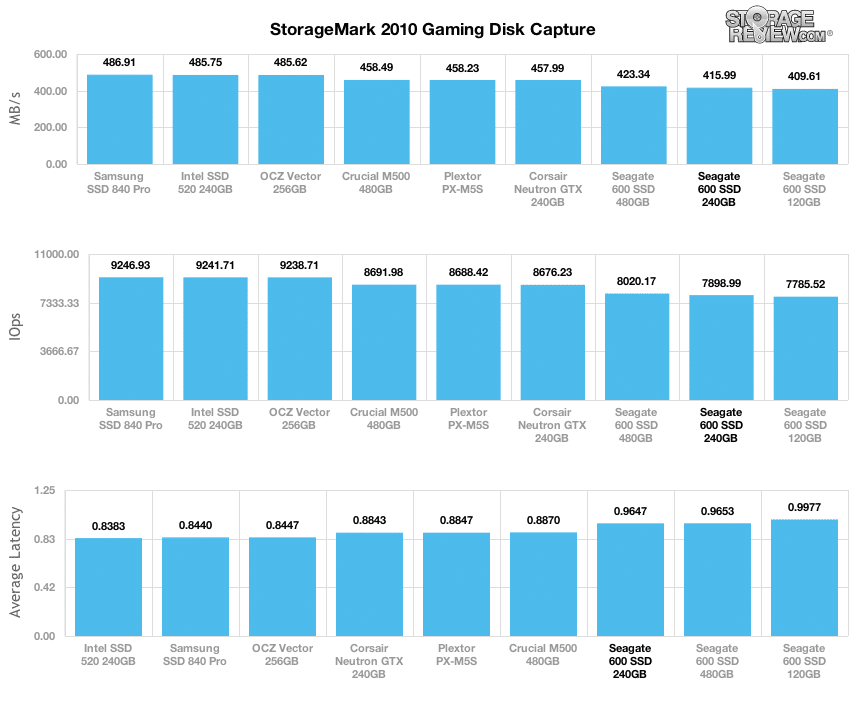
The Seagate 600 SSD is a performance-focused 2.5-inch MLC NAND client SSD in z-Height 5mm and 7mm form factors with a capacity up to 480GB that is primarily designed as an upgrade for laptop users who are gamers, enthusiasts or road warriors or simply need the drive for read-intensive applications. Additionally, as an SSD with no moving parts, there is less of a disk failure risk if users accidentally drop their laptop. Primarily though, Seagate developed the 600 SSD with performance focused on reducing wait times; its boot speed and load times are 50% faster than traditional HDDs. As far as endurance goes, the Seagate 600 SSD offers up to 40GB of data written per day for a maximum of 72TB written over its 3-year warranty period.

Seagate has offered SSD products for many years, though just on the enterprise side of the business. Today's launch is their first consumer effort, ushering in a new era of flash for the company. While certainly not conceding that hard drives are on the way out for client workloads, Seagate does recognize that the future is flash and that they need a multi-pronged approach to meet consumer demands. Seagate already has a family of hybrid hard drives which will certainly extend the life of hard drives in general, but the hybrid may not be the long term solution. With the 600 SSD, Seagate brings a power brand to bear on a market that's long been full of companies with dubious ability to support the product. Consumers get the peace of mind of knowing Seagate will be around to service the warranty while still gaining all the benefits of a pure flash storage solution.
The Seagate 600 uses the Link-a-Media (LAMD) SSD controller in this particular drive. As they haven't yet made an investment in controller technology, Seagate has an opportunity to play the field to select the best controller for their particular implementation. In this case the 600 is very much a mainstream client SSD that aims to blend performance and price in a reliable package. While not exactly a household name, the LAMD controller has shown up before, the Corsair GTX uses the same silicon. Seagate is quick to point out though that they've been part of the development of the controller for some time, contributing engineering and testing during the development cycle. The Seagate SSD group may be tiny by comparison to the HDD side of the business, but the startup-esque team has access to a tremendous amount of storage knowledge and IP that is rivaled by few.
The Seagate 600 SSD comes in three different capacities at 120GB, 240GB and 480GB to meet different application needs with a 3 year usage-capped warranty (72TB total written, 36.5TB for the 120GB model). In this review we cover all three capacities, with a focus on the 240GB sweet-spot.
Seagate 600 SSD Specifications
- Capacities and Models
- 5mm form factor: 120GB (ST120HM001), 240GB (ST240HM001) and 480GB (ST480HM001)
- 7mm form factor: 120GB (ST120HM000), 240GB (ST240HM000) and 480GB (ST480HM000)
- Interface: SATA 6Gb/s
- NAND Type: MLC
- Performance
- Sustained Sequential Read/Write Command Rate (MB/s), 128KB: >500/>400 (>500/>300 for 120GB models)
- Random Read/Write Command Rate (IOPS) Peak, 4KB: Up to 80K/70K (80K/60K on 120GB models)
- Configuration and Reliability
- Nonrecoverable Read Errors per Bits Read, Max: 1 per 1016
- Annualized Failure Rate: 0.58%
- Maximum Data Written to Device per Day: 40GB (20GB for 120GB model)
- Maximum Data Written to Device During 3-year warranty period: 72TB (36.5TB for 120GB model)
- Power Management
- +5V Max Start Current (mA): 950
- Average Sleep Power (W): 0.6
- Average Standby Power (W): 0.6
- Average Idle Power (W): 1.1
- Average Operating Power (W): 0.75
- Environmental
- Internal Operating Temperature (C°): 0 to 70
- Nonoperating Temperature (C°): -55 to 95
- Temperature Change Rate/Hr, Max (C°): 20
- Relative Humidity, Noncondensing (%): 5 to 95
- Shock, 0.5ms (Gs): 1500
- Vibration, 20Hz to 2000Hz (Grms): 11.08
- Dimensions and Weight
- 7mm Dimensions (HxWxD): 7.0mm/0.276" x 69.85mm/2.75" x 100.45mm/3.955"
- 5mm Dimensions (HxWxD): 5.0mm/0.197" x 69.85mm/2.75" x 100.45mm/3.955"
- Weight: 77g/0.17lb (7mm), 67/0.15lb (5mm)
Design and Build
The design of the Seagate 600 SSD is refined yet fairly simple. The front of the 600 SSD features a finger-print free black metal cover that feels refined to the touch. This drive feels tough. Seagate branding is also displayed with a simple design logo on the left side. Switching to the bottom of the drive, there is a simple barcode sticker with model and drive information that includes capacity and says the drive was assembled in the USA. Under the sticker and around it, the drive is composed of silver metal.
The remaining features revolve around the side and front of the Seagate 600 SSD. The side profile presents the screw holes that enable the drive to be mounted easily and properly. Additionally, the drive is rounded out with standard SATA power and data connectors on the front.
While many drives have been 9.5mm form factor models, Seagate and many others in the space are shifting to more 7mm drives. Seagate has taken it a step further with their 600 SSD, offering it in both 7mm and 5mm z-Height, ultra-slim form factors. That makes the 600 SSD perfect for most any application including ultra-slim notebooks.
Opening up the Seagate 600 SSD isn't simple, although since there are no user-replaceable parts inside there is no need to open up the case over the life of the SSD. The bottom cover attaches with multiple metal clips to the body of the SSD. Inside the case, the circuit board is facing down into the top cover of the SSD, held in place by tension of the bottom cover.
Seagate uses the top cover as a large heatsink for the circuit board, with a raised section that makes contact with the controller with a thermal pad in-between.
The Seagate 600 SSD uses the Link-a-Media LM87800 controller with Micron DRAM as buffer and Toshiba MLC NAND. The 240GB 600 SSD uses eight 32GB Toshiba TH58TEG8DDJBA8C NAND packages, with an over-provisioning level of 6%. The 240GB model also includes 256MB of DRAM buffer through two 128GB Micron DDR2 FBGAs.
Consumer Synthetic Benchmarks
All consumer SSD benchmarks are conducted with the StorageReview Consumer Testing Platform. The comparables used for this review include:
- Corsair Neutron GTX (240GB, LAMD LM87800, Toshiba 24nm toggle NAND, SATA)
- Intel SSD 520 (240GB, SandForce SF-2281, Intel 25nm NAND, SATA)
- Samsung SSD 840 Pro (512GB, 300mhz Samsung 3-core MCX controller, Samsung 2x nm Toggle NAND Flash, SATA)
- Plextor PX-M5S (256GB, Marvell 9174, Micron 25nm MLC NAND, SATA)
- OCZ Vector (256GB, Indilinx IDX500M00-BC Barefoot 3, 25nm MLC NAND, SATA)
- Crucial M500 (480GB, Marvell 9187, Micron 20nm MLC NAND, SATA)
All IOMeter figures are represented as binary figures for MB/s speeds.
Seagate promotes the 600 SSD claiming speeds of up to 500MB/s read and 400MB/s write in sequential transfers. Our first test is designed to test that using IOMeter with a 2MB sequential transfer. We measured speeds of 495MB/s read and 442MB/s write with incompressible data which placed the Seagate 600 SSD 240GB in line with Seagate's read figures and impressively above reported write activity figures. The Seagate 600 SSD found itself in the higher-end of the overall grouping.
Our next test maintains the 2MB transfer size, but this time we are measuring random transfer speeds. The Seagate 600 SSD 240 GB ranked near the bottom of the group in write activity at 406MB/s, and came in the near the middle at 441MB/s read.
In our next test we measure low queue depth random 4k read and write performance. In this test, the Seagate 600 SSD 240GB placed near the middle of the group and right on par with nearly identical figures as the Corsair Neutron GTX 240GB.
Our next test scales the queue depth between 1 and 64, showing how well the drive reacts to an increased workload. In a random 4k read setting, the Seagate 600 SSD 240GB placed comparably again to the Corsair Neutron GTX. Those drives had marks on the higher end of the spectrum, just under the Samsung 840 SSD Pro.
Measuring random 4k write performance, the Seagate 600 SSD again came in towards the upper middle of the pack throughout the queue depths, with its greatest performance starting at QD 16.
Expanding our QD1 4k test, we look at write latency of each SSD. Lower numbers are better, since it means less wait time for activity to process. Max latency is also important, although that number can change as the NAND experiences wear over time. The Seagate 600 SSD 240GB and the Corsair Neutron GTX 240GB were again near identical with 4k write latency near the bottom of the SSDs. We measured an average latency of 0.0577ms from the Seagate 600 SSD 240GB. Its peak latency performance was greater with a superb peak latency of 1.60ms.
Our last series of synthetic benchmarks compares the drives in a series of server mixed-workloads with a queue depth ranging from 1 to 128. Each of our server profile tests has a strong preference for read activity, ranging from 67% read with our database profile to 100% read in our web server profile.
The first profile is our database test with a 67% read and 33% write workload mix primarily centered on 8k transfer sizes. In this test, the Seagate 600 SSD tested near the bottom of the group.
The next test looks at a file server profile with an 80% read and 20% write workload spread out over multiple transfer sizes ranging from 512-byte to 64KB. In this testing, the Seagate 600 SSD was near the lower end of the group.
Our web server profile is read-only with a spread of transfer sizes from 512-byte to 512KB. Here, the Seagate 600 SSD 240GB placed in the middle of the pack.
The last profile looks at a workstation, with a 20% write and 80% read mixture using 8k transfers. The Seagate 600 SSD 240GB ranked near the bottom of the group here.
Consumer Real-World Benchmarks
For the average consumer, trying to translate random 4k write speeds into an everyday situation is pretty difficult. It helps when comparing drives in every setting possible, but it doesn't exactly work out into faster everyday usage or better game loading times. For this reason we turned to our StorageMark 2010 traces, which include HTPC, Productivity, and Gaming traces to help readers find out how a drive might rank under their conditions.
The first real-life test is our HTPC scenario. In this test we include: playing one 720P HD movie in Media Player Classic, one 480P SD movie playing in VLC, three movies downloading simultaneously through iTunes, and one 1080i HDTV stream being recorded through Windows Media Center over a 15 minute period. Higher IOps and MB/s rates with lower latency times are preferred. In this trace we recorded 2,986MB being written to the drive and 1,924MB being read. Our second real-life test covers disk activity in a productivity scenario. For all intents and purposes this test shows drive performance under normal daily activity for most users. This test includes: a three hour period operating in an office productivity environment with 32-bit Vista running Outlook 2007 connected to an Exchange server, web browsing using Chrome and IE8, editing files within Office 2007, viewing PDFs in Adobe Reader, and an hour of local music playback with two hours of additional online music via Pandora. In this trace we recorded 4,830MB being written to the drive and 2,758MB being read.
In our HTPC trace, the Seagate 600 SSD 240GB had an impressive average transfer speed just above the Neutron GTX at 350.92MB/s as well as high IOPS near 7570.
Our second real-life test covers disk activity in a productivity scenario. For all intents and purposes this test shows drive performance under normal daily activity for most users. This test includes: a three hour period operating in an office productivity environment with 32-bit Vista running Outlook 2007 connected to an Exchange server, web browsing using Chrome and IE8, editing files within Office 2007, viewing PDFs in Adobe Reader, and an hour of local music playback with two hours of additional online music via Pandora. In this trace we recorded 4,830MB being written to the drive and 2,758MB being read.
Our third real-life test covers disk activity in a gaming environment. Unlike the HTPC or Productivity trace, this one relies heavily on the read performance of a drive. To give a simple breakdown of read/write percentages, the HTPC test is 64% write, 36% read, the Productivity test is 59% write and 41% read, while the gaming trace is 6% write and 94% read. The test consists of a Windows 7 Ultimate 64-bit system pre-configured with Steam, with Grand Theft Auto 4, Left 4 Dead 2, and Mass Effect 2 already downloaded and installed. The trace captures the heavy read activity of each game loading from the start, as well as textures as the game progresses. In this trace we recorded 426MB being written to the drive and 7,235MB being read.
In our read-heavy Gaming trace, the Seagate 600 SSD 240GB fell to the back of the group, but still delivered a solid 416MB/s average speed.
Power Consumption
The Seagate 600 SSD proved to be a power-sipped, not guzzler. Seagate's published numbers said the drive would consume 1.1W in idle operation, but we measured numbers slightly lower than that at 1.01, 1.04 and 1.06W (by capacity). These figures as well as the others we tested are quite reasonable and should help notebooks maintain longer lasting batteries with the 600 SSD added as an upgrade.
Conclusion
With the entry of the Seagate 600 SSD, Seagate has finally broadened their expansive HDD portfolio with a mainstream consumer SSD. The 600 SSD is a 2.5-inch MLC NAND SSD in z-Height 5mm and 7mm form factors that serves as an upgrade to notebook drives. With its low-height design, it can fit in any sort of configuration from standard-sized notebooks to ultra-slims. Additionally, it offers a capacity up to 480GB. These features are part of Seagate's design target toward road warriors, gamers and PC enthusiasts.
The Seagate 600 SSD offers buyers a lot of value as an upgrade drive. For starters, the 600 SSD comes in ultra-slim z-Height 5mm and 7mm form factors. At that height, the drive could comfortably fit into any drive slot, often with room to spare. Furthermore, users with slim, streamlined notebooks are often looking for drives that are don't guzzle down power. The Seagate 600 SSD measured well in the power department, although its near 1 watt idle usage sits above other models in this category.
The 600 SSD was a consistent performer with solid marks even without focus being placed on top-notch performance. It consistently ranked middle to upper pack in our mainstream consumer SSD category with strong read and write performance from the 240 and 480GB models. In mixed workloads such as our consumer traces it fell into the middle of the pack, or trailed slightly in our gaming trace. In our light-business oriented mixed workloads it ranked mid to upper pack. Overall the Seagate 600 SSD performed well in our tests and continues to show the strength of the Seagate brand in the consumer markets.
Pros
- Ultra-slim 5mm and 7mm form factors
- Excellent write performance
Cons
- Slipped behind in our consumer productivity and gaming traces
Bottom Line
The Seagate 600 SSD is a client drive aimed at enthusiasts that can fit just about any application and offers reliable performance.

